I love hifi shows. Time to see old friends and new equipment, and of course some old favourites, too. It gave me the chance to meet both new faces and products at a new location for me, at a time when this hitherto fairly unknown show now wants to turn up the volume and make it really international and worthy of your trip on Ryanair. This is not a new show, having begun in 1992, and this year has been rebranded as the ‘Copenhagen High End Show’, emphasising the top-end brands manufactured in Scandinavian countries, having originally been known as the ‘HiFi and Surround Show’. Starting modestly in a hotel the other side of Copenhagen, the capital and most populated city on the eastern coast of the island of Zealand, the event this year was the fifth time at the Clarion Hotel, conveniently located at the airport, meaning easy connectivity for those coming in via the airport or metro. For the previous eight years the show was at the Marriott in Copenhagen, around 25 minutes away by train away. Scandinavia should be really taken seriously for what they offer the audiophile and not just from majors such as Dynaudio, Gryphon, Dali and Densen. I guess with the prevalent winds and snow keeping the Danes sat indoors keeping warm for much of the year they really do need a good hi-fi system to keep them entertained.
This year they invited 15 of the “best” press from around the world to see the event themselves, and especially to experience home-grown hi-end from manufacturers from Scandinavian countries. Of course there were also a large number of representations from other countries around the world, particularly Europe, including some world premieres, and even some live music provided by cellist Vincent Belanger in the Audio Note room, their first CD/LP, a series of productions promoting new young international musicians. Unfortunately Ken Ishiwata wasn’t able to get to the show on the 27th October, to demonstrate the KI-Ruby series from Marantz, though I had seen him a few weeks earlier at the Indulgence Show in Hammersmith, London. However, appearances from Peter Comeau from IAG/Quad, Peter Gabriel from Avant Garde, Conrad Mas from Avid and many, many others made it an event well worth visiting not just to get close to the equipment but also the brains behind them. The list of products from manufacturers and distributors appearing in all the rooms was especially high, and from all parts of the world. The Copenhagen High End Show itself was situated on the ground, 2nd and 3rd floors of the hotel. There wasn’t a “1st floor” in this exceptionally good hotel, and nothing was marred by the fact that there was major building work going on the surroundings the premises. Veronika and Thomas, who organised the show for us media folk with assistance from Hifi-Freaks.dk, provided us with a day to tour Copenhagen prior to the 2-day display as well as more food and drink than I could possibly get through! I was honoured to be asked to attend and thoroughly enjoyed it, as did the thousands of visitors to the show. It might not yet be on the scale of Warsaw or Munich, but the organisers were proud of their annual event of 26 years, and wanted the rest of the world to know about it. The show was well organised and around 3000 visitors found it easy to access and listen to products at their leisure. Indeed, I found the sound from equipment in this show better than many shows I have been to in the past! 


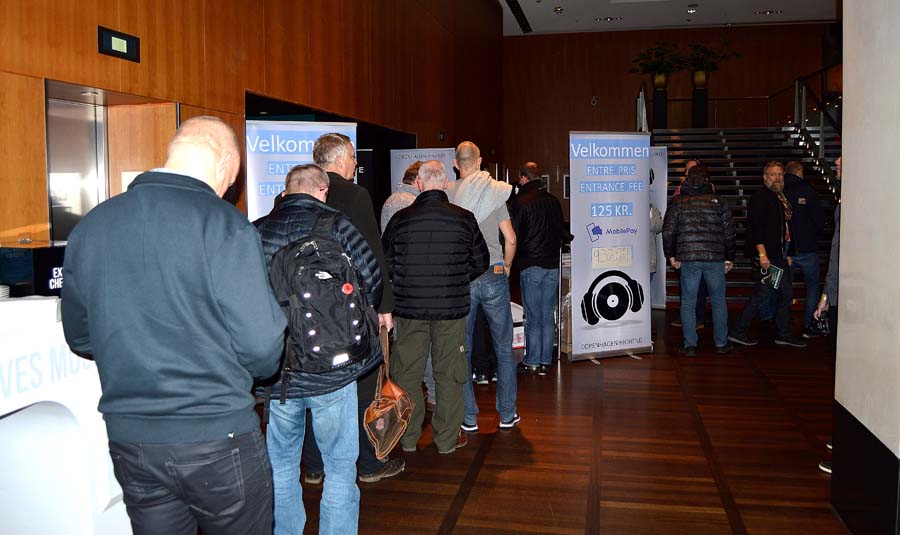
For me, by far the best sound at the show was provided in the Avant Garde room, with their Trio and Basshorn XD providing realism to Bach’s Toccata and Fugue BWV 565 that can only otherwise be experienced in a concert hall with real pipes. If only my living room was big enough. Most of the hi-fi from home-grown Danish, Swedish and Norwegian manufacturers were more petit and some of them absolutely beautiful looking, typical of goods from this part of the world. Of new products from around the world I was pleased to see the new Mission ZS series of speakers, the new Audiolab 6000 series, a new speaker from Sonus Faber, and first listening for the new Cambridge Audio Edge streamer and power amplifier, celebrating their 50th anniversary. Three years in the making this product, engineered in London, was designed with “no budget, no constraints” in mind to produce for them the very best audio. I am old enough to remember seeing the P40 integrated amp all those years ago, designed by their earliest engineer Professor Gordon Edge. This new series of ‘A’ Integrated, ‘W’ power and ‘NQ’ streamer/preamp series of components plays homage to him, though the title Edge could equally be appropriate for the curvy looks of this gorgeous looking product. The ‘W’ power amplifier uses only 14 components, with anything not necessary being stripped down, and all components linked with the shortest signal path. Also good to see was the XYZ 4D Ultimate cartridge from Japan ($4,800) sitting on an American Dr Feikert Analogue Volare turntable, a combination of silky smooth but detailed soundstage covering all frequencies. Indeed the cartridge frequency response extends to 100,000Hz, enough for any bat in the family. 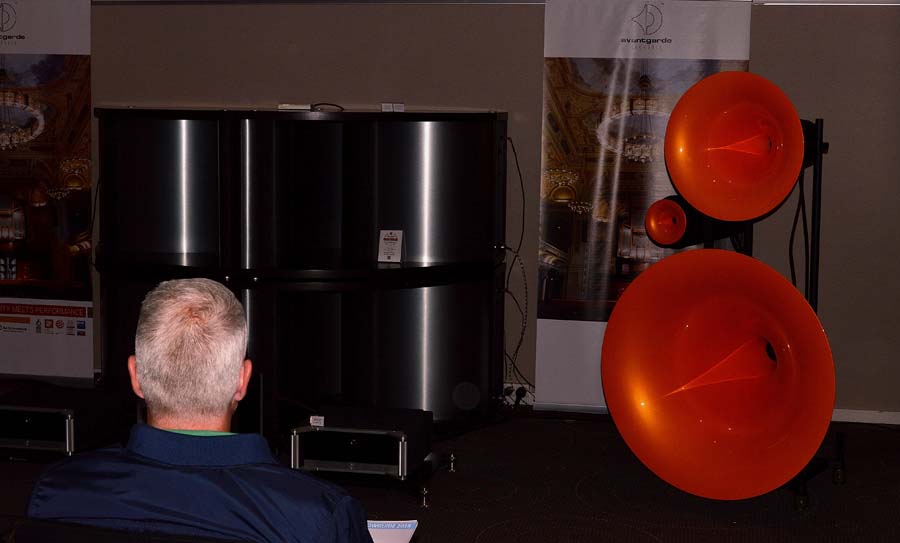
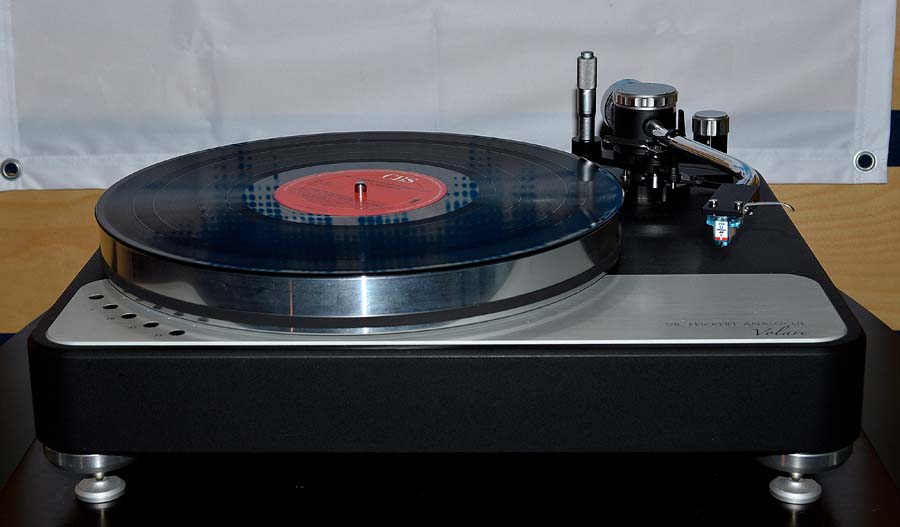

Closer to my home, but with Danish links was TIBO. Based in Woburn Sands UK not far from me, their boss is of Danish origin although he has been living in the UK for over 15 years. They produce a series of portable smart streaming speakers with distinctive Danish looks and quality, and for those already with their own amplification and speakers, they had on show a set of competitively priced streamers including the Bond 1, Bond 2, soon to be released Bond 3, and the Bond 4 which at £149 includes a 2 x 25W Class D amplifier.
Moving completely to Denmark, Soekris Engineering produces a series of DACs utilising their unique discrete D-to-A converters making a change from the usually ESSential chips seen in digital gear. With a distinctive lime coloured casing top and sides on the three models on display at the show (I loved the colour!) they produce not only these, but also a single circuit board version for you DIYers who would like to add your own discrete components, such as power supply, preamp, etc. The middle and top model also have a headphone output. The design is based on a 27 bit R-2R sign magnitude DAC, built with over four hundred tiny and ultra-precise thin film resistors. 
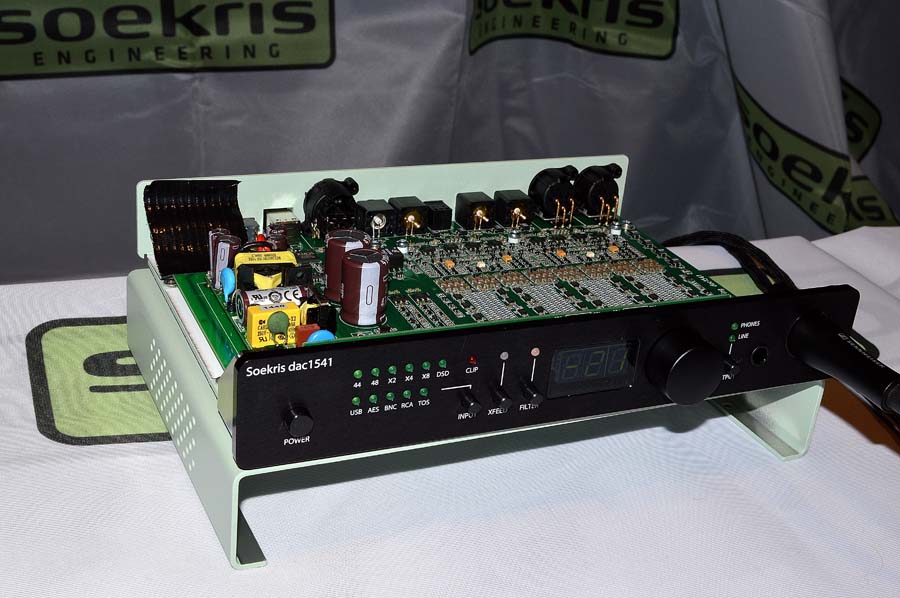
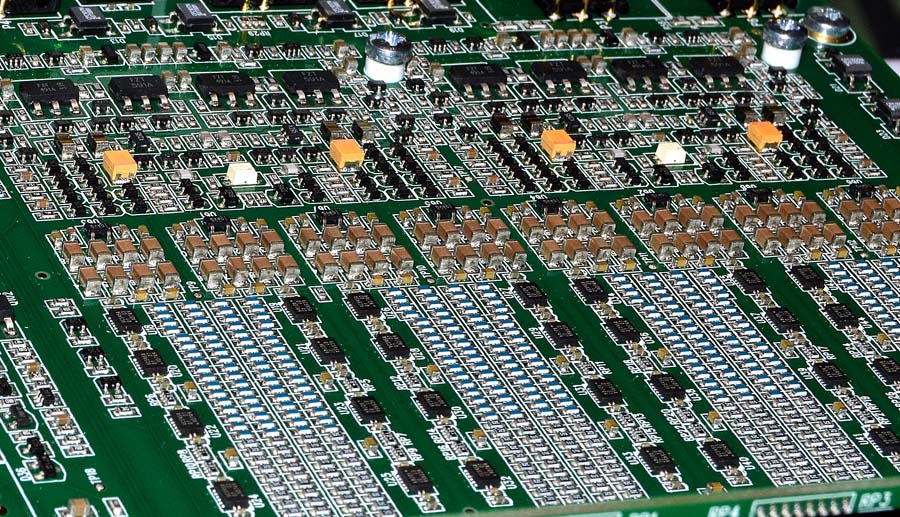
Whilst there was no Bang and Olufsen, Densen, who make beautiful and modestly proportioned separates were there in force with their new B180 integrated amp (150W 8Ω, 300W 4Ω) powering the towering Triangle Magellan Grande Concert speakers. Built on three separate boxes and encompassing 4 front bass plus mid and tweeter and a rear facing tweeter and midrange unit, this is a 100kg monster. The Densen was quick and effortless in its presentation of the music through these gigantic speakers.
Home to Denmark is also Jern Audio, who produced for me what was the most impressive product of the show, a cute little curvy number made from cast iron, the JERN 14DS (PHOTOS). CEO Ole Lund Christensen is not new to the audio business, selling GamuT Audio in 2003 (remember the excellent D 200 amplifier), and designing the control room at PUK Recording Studio between 1985 and 87 (George Michael and Elton John have both recorded there), including a 10,000W amplifier system driving 4-way loudspeakers. His background in the pro audio circles made it easy for me to hear that he knew what a loudspeaker should sound like. The reality and imaging from these miniatures was mightily impressive. The key to the product is indeed the use of cast iron simply because, as he suggests, wood and aluminium “won’t shut up”. I have spoken in the past about the choice of materials for the cabinet of both speakers and IEMs as being vitally important. There are distinctive differences in sounds between different metals, let alone moving from metal to wood. Ole demonstrated eloquently the effects of materials as he ‘banged’ blocks of wood, aluminium and high-graphite cast iron. The aluminium “rang” with a resounding forte F sharp as he hit it with his hammer. The iron block had no resonance, one reason why it is used as frames for pianos and even most car engine blocks. The excellent imaging from the speakers reminded me of the equally petite LS3/5a speaker, both boasting infinite baffle design. He, like me, prefers not to have ports, and as well as clear tops the sound extended further into the bass end than I, or visitors to the room, could have imagined it would. Indeed, he even placed a prototype sub in the room as a joke to make listeners think the deep bass from the JERN 14 DS was actually emanating from it. The JERN 14 DS comes complete with rubber ring to place the unit on any surface (don’t worry about a stand) and enables you to angle the sound directly to your ears. Believe me, I love my original Chartwell LS3/5a, but the JERN in its choice of polar white, Casting Grey, Nordic Black or Danish Red, not only looks better but sounds superior in terms of weight, detail and imaging. I want a pair. Once he gets his sub-woofer out there, this could be one of the best sounding systems for your home.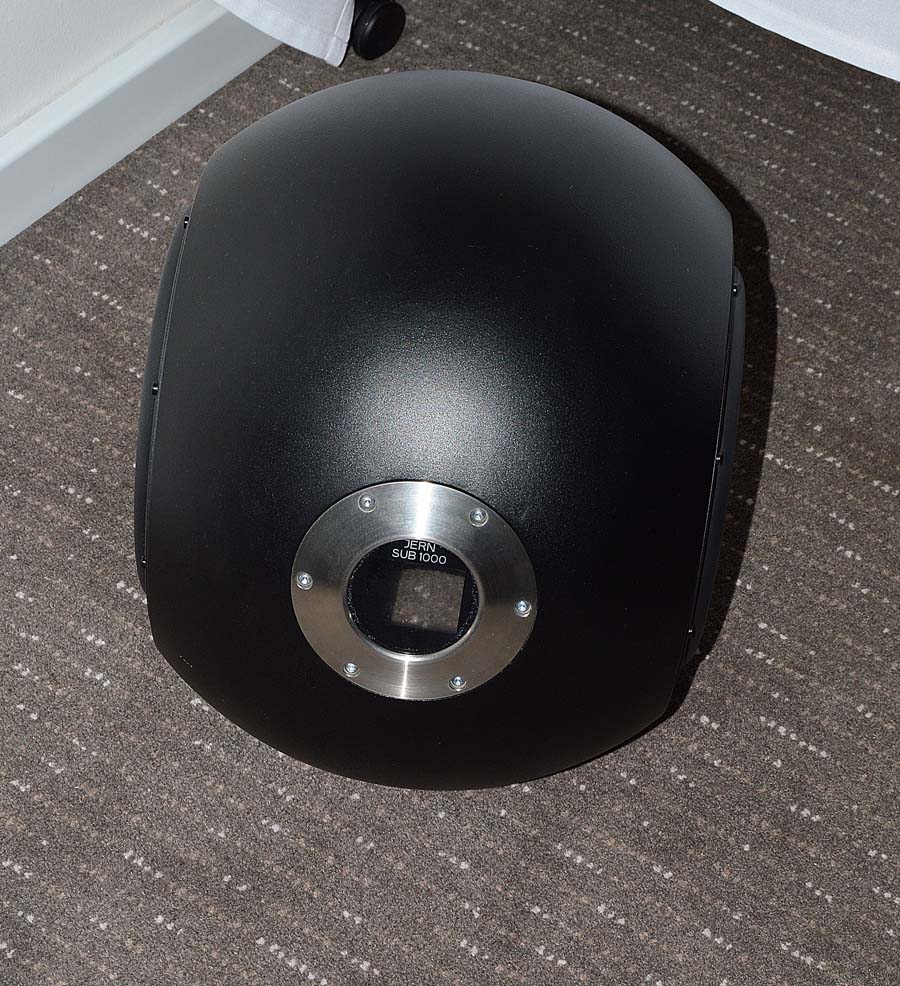

Returning to the UK, sort of, was the first listening for me of the Quad ERA 1 planar magnetic open headphone, a first for this company. I guess I was surprised that they didn’t go the electrostatic approach going by their historical background, but I needn’t have worried about losing speed and detail from the music. The bass was agile and extended (this is no ESL57!) and the tops as clear as one would expect. Indeed, the sound reminded me somewhat of my Quad 303/33 set up; warm and musical presentation, particularly at the mid frequencies, but it wasn’t a dated sound. The traditional looking unit is comfortable to wear, easy to drive, and at a very competitive pricing should win many fans, not only Quad diehards.
AVID is a British success story producing heavyweight products under the Avid banner, as well as the design and manufacturing for other companies within the audio, automotive, medical and military industries. Their new SIGSUM integrated amplifier was on show, created as in all their products with design being foremost and then priced once the work has been done. That way Conrad and his team can ensure they get the quality and features they need, rather than reducing quality in order to get to a desired price. And, if some find £13,000 too much to part with, then a cheaper version is due in 2019. Sharing many of the components found in their more expensive REFERENCE series, this is a Class A/B design producing 110W 8Ω grunt, with 1.1kVA main power supply with a separate dedicated transformer for the integral phono-stage, itself taken directly from the PULSUS. The unit also has a headphone amp and deploys Alps RK50 volume control. The casing might not be as substantial as the more expensive REFERENCE series, but the SIGSUM at 31.2Kg might still be painful on your back if not so much on your wallet. In common with AVID audio it is available in Black or Silver. Oh, and it is called the SIGSUM because it is the SUM of two SIGnals. I guess SUMSIG doesn’t sound quite so good.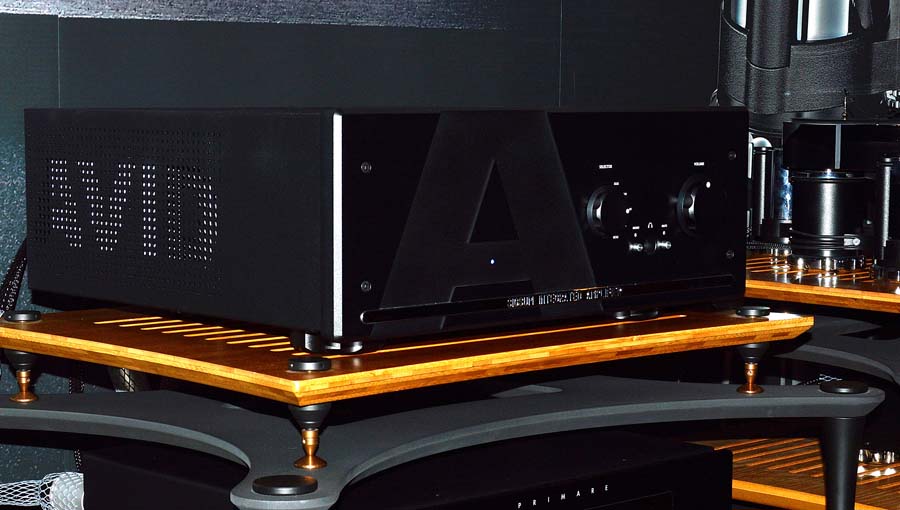
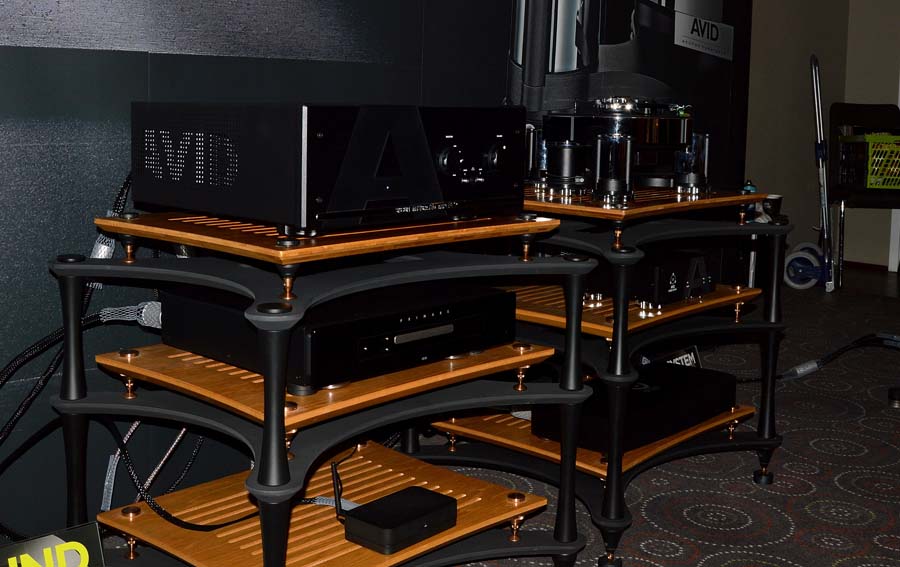
Other new big name products being shown included the just-released JBL L100 Classic. This is is a totally redeveloped retro version of the model released in 1970 and which I got to own in my youth. Still with vintage JBL styling including a Quadrex foam grille available in a choice of three colours — black, orange, or blue — the enclosures are finished in a satin walnut wood veneer with black front and rear panels. The original model was one of the best of the 70’s, so the new one has a lot to live up to. The L100 Classic designed by Chris Hagen uses the newly developed JT025Ti1 1-inch Titanium dome tweeter, JM125PC 5-inch pure-pulp cone midrange driver located directly below with HF and MF attenuators located to the left and the 1200FE 12-inch cast-frame, white pure-pulp cone woofer sat below. The bass-reflex enclosure system is tuned via a front-firing port tube with flared exit.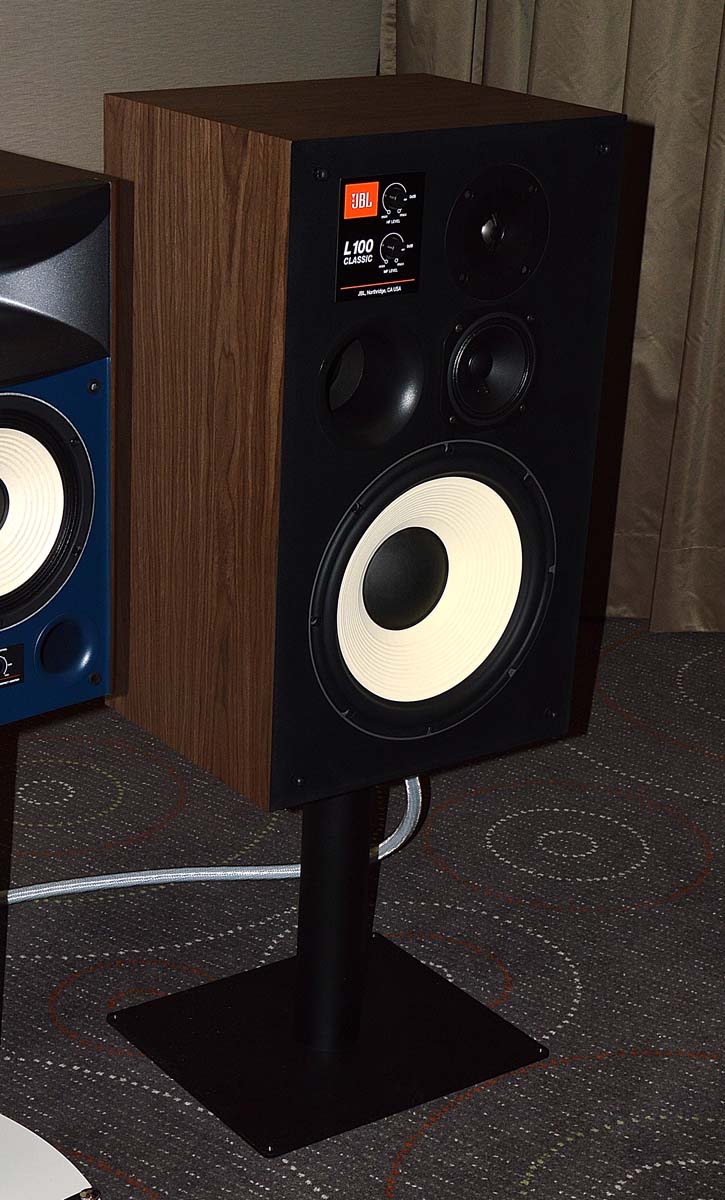
Back in Scandinavia I was highly impressed by another loudspeaker system by Buchardt Audio, a company run by a young entrepreneur called Mads Buchardt who first started designing speakers in 2009 and formed the company in 2013. The S400 is certainly not a vintage looking speaker as is the JBL, even if the 0.74” soft dome tweeter sits below the 6” aluminium woofer, something I first saw in the early days of Mission speakers. The reversal of drivers is a change from their previous model, the S300. The whole cabinet is slightly slanted to ensure phase alignment and includes a passive 8”x5” driver at the rear rather than a conventional port. At €2000 this was a very well-priced and tidy sounding loudspeaker well worth investigating in the future, and fulfilling Mads theory that Hi-fi shouldn’t cost the earth. One way he achieves this is selling directly to the consumer, thereby missing out the large cut for the dealers. With a crossover at the lower-than-usual 2000Hz, vocals and strings were very tidy and very real, and bass (quoted 33Hz +/-3dB) lower for a bookshelf speaker than from much of the competition plus a top end clarity aided by the time alignment and flared radiator surrounding the tweeter. Indeed, even off-axis the sound was surprisingly good. In order to get the speaker to work at any position, including up against a wall, Mads analysed the entire surface area of the loudspeaker, 5402 points to be exact. Perhaps the speaker should have been called the S402.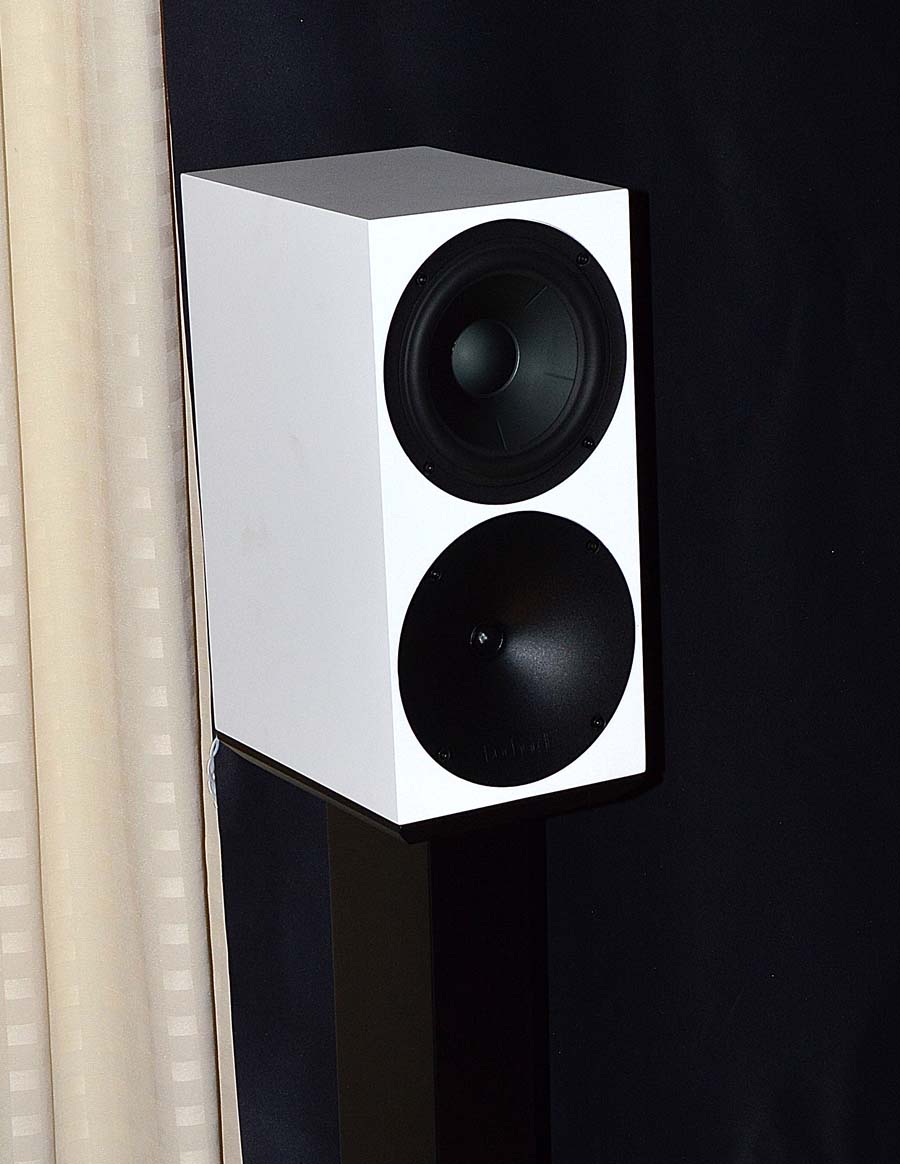
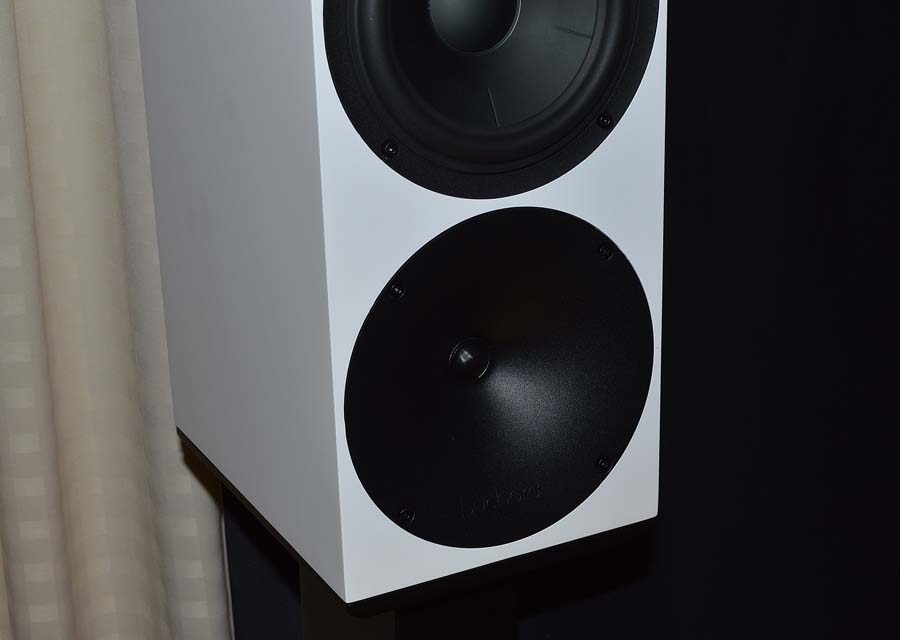
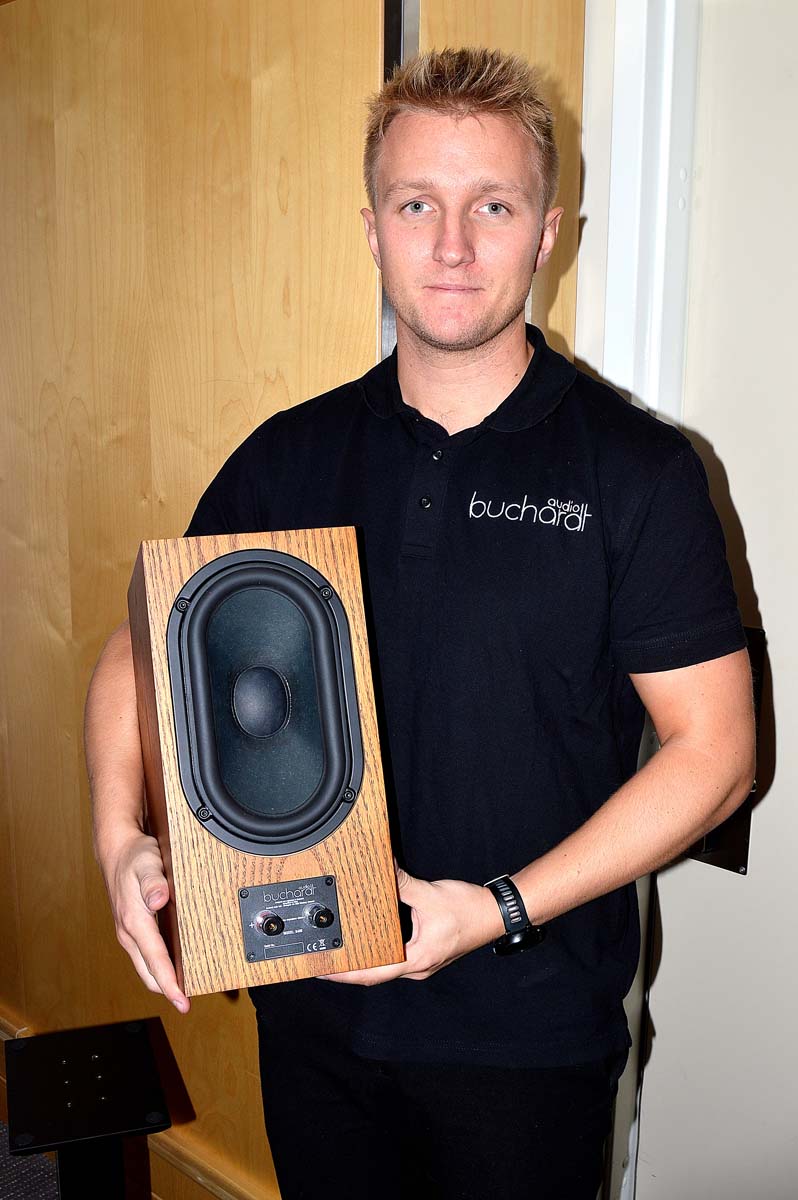
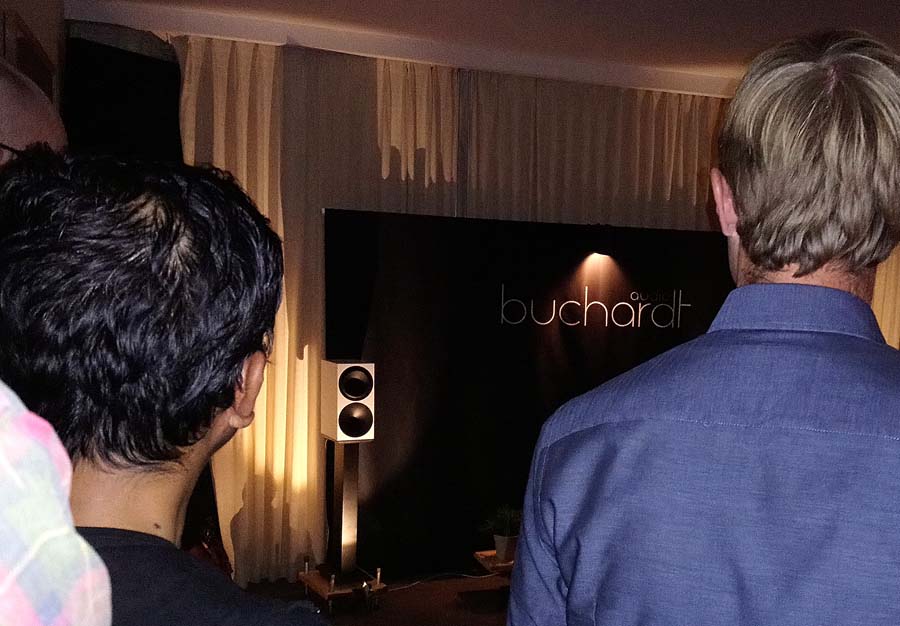
Hagto Audio, from Norway, have gone even smaller at least from the front, with their Trym speakers, a very trim square-fronted but deep cabinet ( 20 x 20 x 32.5cm to be exact) with full-range EMS 6” paper cone driver operating down to 45Hz and 92dB/1m, fitted with high quality Cardas terminals and internal cabling from Audio Note. At around €2500 they come complete with stands. There is a long and narrow “slit” for the port at the rear. The cabinet veneer has a carefully matched grain top and front, which made it look like it was a solid piece of white polished ash wood sculptured to fit the speaker and internal space. It is also available in black. The sound quality was surprisingly polished on vocals, showing a slight mid peak in the room, but for a single driver speaker was extremely polished and very efficient at 94dB/1m.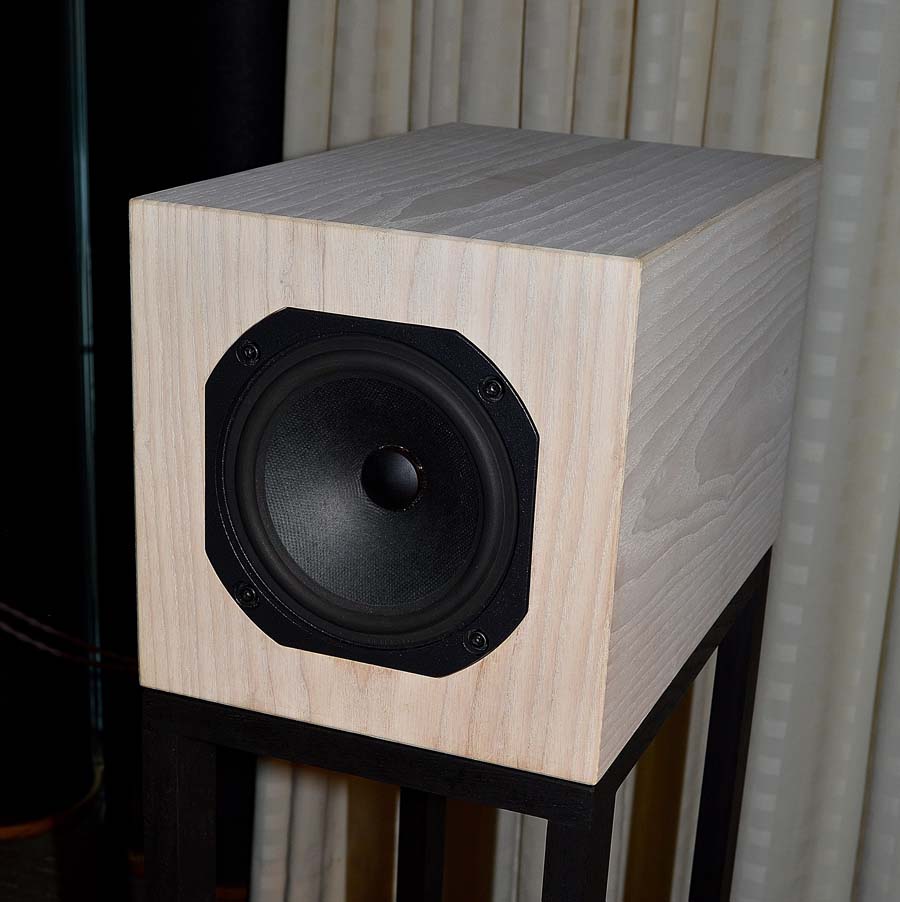
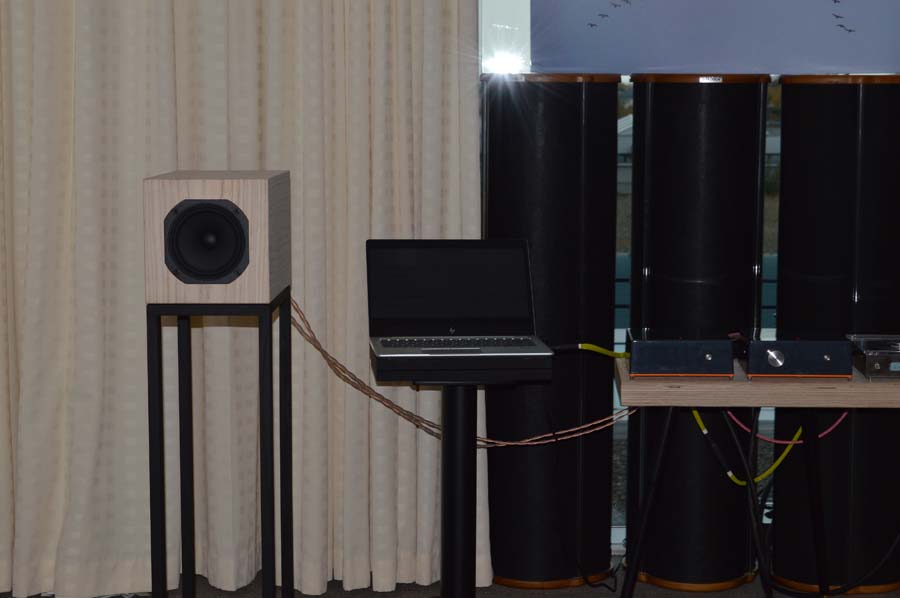
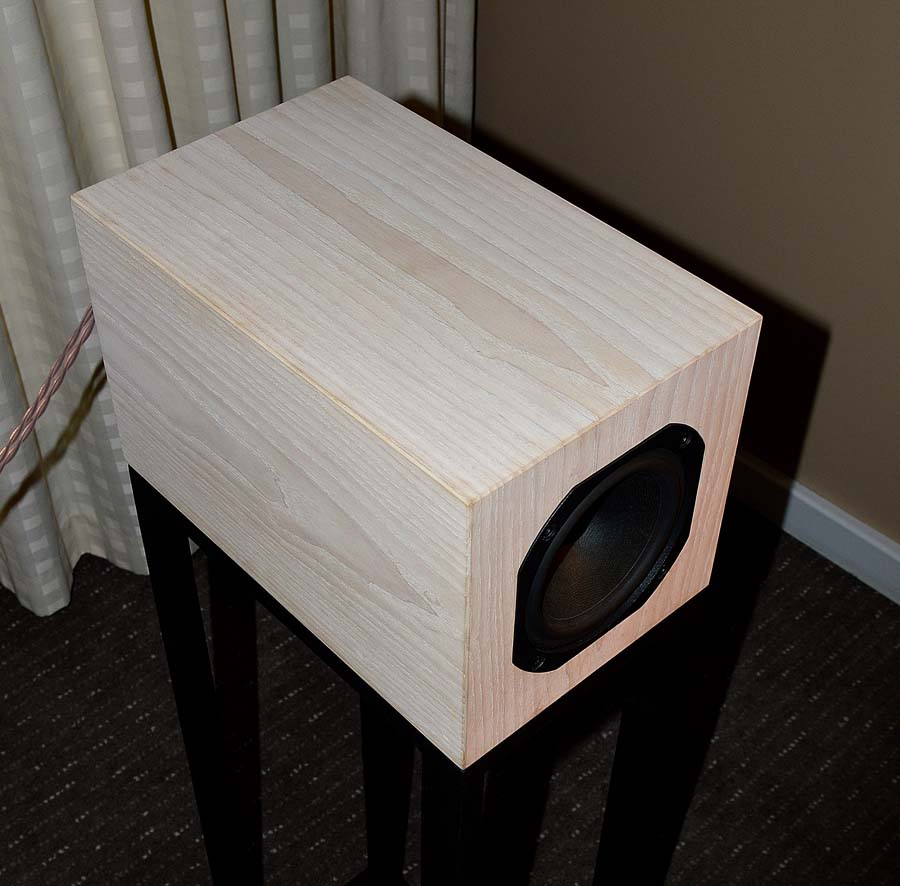
Another Scandinavian company was Mørch Tonearms, showing off a large collection of 9” and 12” arms with aluminium or brass arms. The engineering was particularly detailed with counterweights positioned low to match the pivot point. Mørch is a name that has been synonymous with arm engineering since the ‘60’s. Each arm is available with 4 dots inscribed on the head-shell of different colours to indicate different effective weights, meaning they can work best with your chosen cartridge, reducing the fundamental tonearm resonance to the lowest frequency where it doesn’t interfere with the cartridge. The DP-8 works out at $4995 in chrome or $5895 in gold finish. This arm has outriggers either side of the pivot point to ensure low “mass” in the vertical direction to help track the warps in your worst records and “high” mass in the horizontal to help get that really deep bass from the music. According to Mørch only tangential trackers and Max Townshend’s front trough damping (eg the Rock 7) are comparable.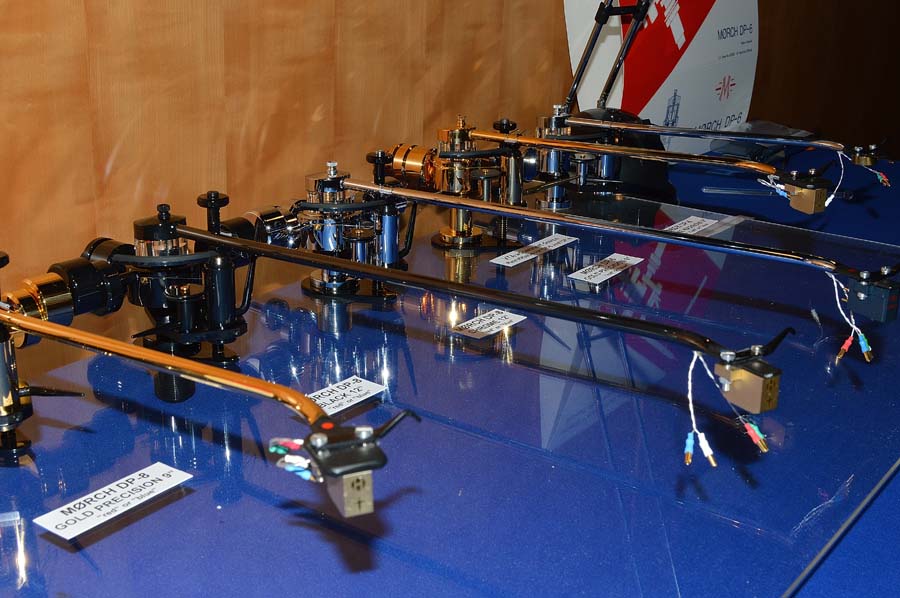
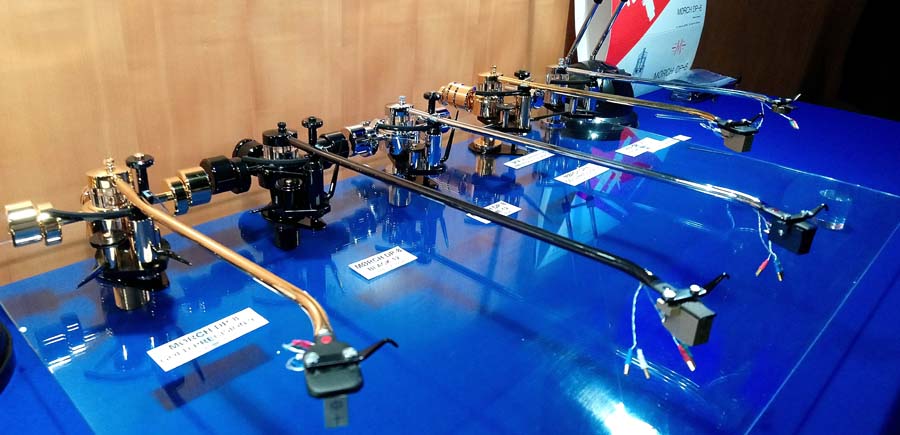
Other companies at the show included Slovenia’s Mag-Levs magical levitating turntables, creating much interest in the show. This kick-starter company designed the turntable with a UPS system that stores enough power to safely lift the tonearm, stop the record, and return the platter feet to resting position if you should suffer a power outage in your house. Indeed, when you switch off the unit four feet ascend from the bass of the unit to keep the platter from falling. I always wondered what would happen if you switch it off! 

Other Scandinavian companies included Physon Audio PD2 SE DAC/preamplifier and A2.120 SE power amplifier, Jern’s interesting xast iron loudspeakers, Thorhauge M.70 valve amp, and many more products from Denmark and other Scandinavian countries. To put them all on were stands from Solid Tech, made in Sweden. Using vibration isolation they all looked strong and substantial, and really smart. 
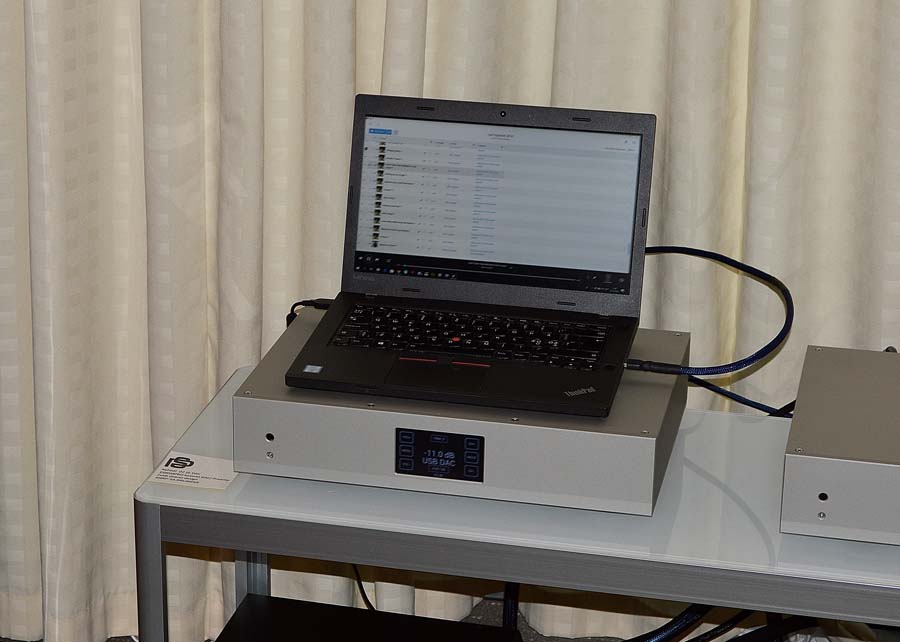
I really enjoyed my stay and am very grateful to Veronika, Thomas and Hifi-Freaks.dk This was a carefully thought out show with enough to occupy the visitor for two days, with places for meeting and drinking should you need a rest. Whilst it might not have been the biggest I have been to, what really made the show special and above others was the highly detailed and glossy 80-page show guide, with full details and photos of some of the major products on exhibition. Other could learn a lot from this. Just wish it had been written in English.
Full list of brands represented at the show:
Absolare
Acoustical Systems
ADL by Furutech
AirTight
Alluxity
AMC
Amphion
AnalogMagic
Arcam Art Audio
Atlantic Technology
Audeze
Audio Block
Audio Note
Audio Solutions
Audiodesk Systeme
Audiofly
Audiolab
Audiophilleo
Audiovector
Auralic
Aurender
Avantgarde Acoustic
AVM Audio
Bassocontinuo
Belles
Benz Cartridges
Bergmann Audio
Blue Cheese Audio
Blue Jeans
Boston Acoustics
Burchard
Bülow Stand
Cambridge
Canor Audio
Clearaudio
Clearaudio
Clic
Coda Technologies
Constellation Audio
Convergent Audio Technology
Croft Acoustics
Custom Design
Dartzeel
dCS
Definitive Technologies
Densen
Devialet
DLS
Dr. Feickert Analogue
Dynaudio
Dynavector
EAR / Yoshino
Earthquake
ELAC
Eminent Technology
Erzetich
Estelon
EVOX Copenhagen
Floatpoint
Furutech
GATO
Gauder Akustik
Genelec
Glanz
Gold Note
GoldenEar
Grado
Grado Labs
Graham Audio
Groneberg
Hagto Audio
Harbeth
Hegel
Helius
HifiMan
Horns
Innuos
JBL
JE Sugden
Jelco
Jern
JL Audio
Kalista
Key Digital
Kimber Kable
Kiseki
Koetsu Audio Cartridges
Kuzma
Lamm Industries
Lehman Audio
Lexicon
LFD Audio
Living Voice
Luxul
M2Tech
Magico
Manley Labs
Marantz
Mark Levinson
Martin Logan
Master & Dynamic
Métronome
MEZE Audio
Michell
Micromega
Mission
Miyajima Lab
Monitor Audio
Moscode
Musaic
Music Reference
My Sonic Lab
Mørch
Nitty Gritty
North Star Design
NuForce
NuPrime
Oracle Audio
Ortofon
Oyaide
Parasound
Peachtree Audio
PMC
Polk Audio
Primaluna
Project Audio
Purist Audio Design
QED
Quad
RCM
Rega
Revel
Rockport Technologies
Roksan Audio
Roon Labs
Rosso Fiorentino
Ruark Audio
Russell K
RW Acoustics
Sennheiser
Shelter
SIM2
Solidsteel
Soltanus Acoustics
Sonus Faber
SOtM
Speakers Corner Records
Spendor
STAX
Stenheim
Stillpoints
Studio Sound
Sumiko
Supra
System Audio
Taga Harmony
TAOC
TDG Audio
TechDAS
Tellurium Q
Thorens
TIBO
Top Wing
Torus Power
Townshend
Trafomatic
Triangle
Trilogy
Tri-Planar
Tru-Lift
TW-acustic
Van Den Hul
Vanguard Dynamics
VEGA
Vicoustic
Vincent-Tac Audio
Vitus Audio
VPI
Welltempered Labs
Wharfedale
Wilson Benesch
Wireworld Cables
XLO
Zensati
ZYX
Janine Elliot



















































































































































































































You must be logged in to leave a reply.